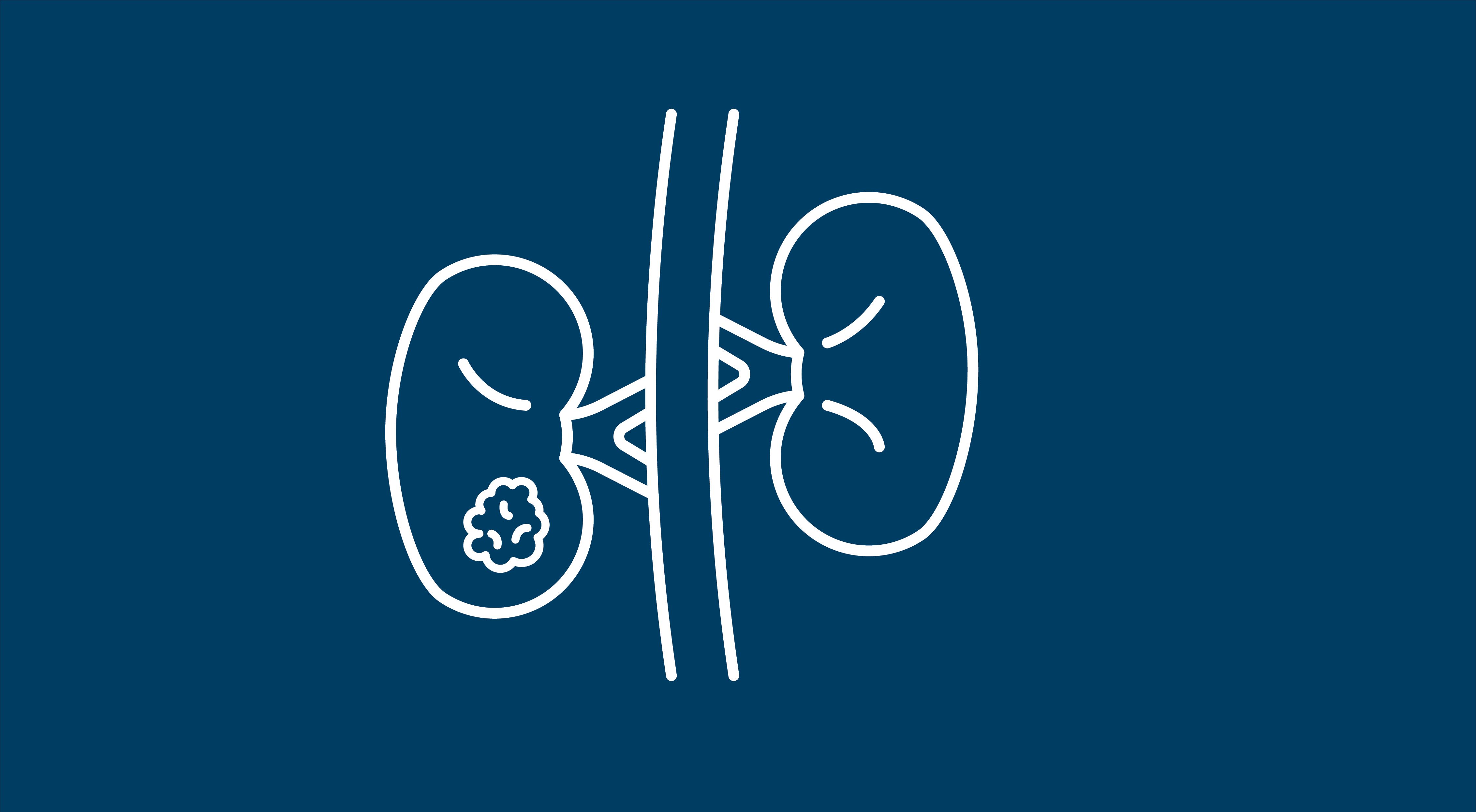Lenvatinib/Pembrolizumab Generates Lasting Responses in Advanced Kidney Cancer
The duration of response was 39.2 months among patients with 1 metastatic site treated in the combination arm vs 29.5 months for patients given sunitinib.
Lenvatinib/Pembrolizumab Generates Lasting Responses in Advanced Kidney Cancer

Patients with advanced clear cell renal cell carcinoma (ccRCC) achieved better tumor shrinkage and duration of responses with lenvatinib (Lenvima) in combination with pembrolizumab (Keytruda) vs sunitinib, according to findings from the phase 3 CLEAR study (NCT02811861) presented at the 2023 European Society of Medical Oncology Congress.1
ORR favored lenvatinib and pembrolizumab vs sunitinib, irrespective of metastatic site (71.3% v 36.7%). With rates of 72.3% and 46.5% (odds ratio [OR], 2.98; 95% CI, 1.71-5.21), ORR favored the combination of lenvatinib plus pembrolizumab in patients with 1 metastatic site, as well as in patients with ≥2 metastatic sites (70.1% v 37.0%; OR, 5.06; 95% CI, 3.40-7.53). Among patients with target lesion diameter sums ≥60 mm, ORR rates were favored with the combination of lenvatinib and pembrolizumab (72.2% v 23.0%; OR, 10.50; 95% CI, 6.08-18.13), and for patients with target lesion diameter sums <60 mm (77.5% v 53.1%; OR, 3.14; 95% CI, 1.94%-5.07%).
The DOR was 39.2 months (95% CI, 27.1-46.7) among patients with 1 metastatic site treated in the combination arm vs 29.5 months (95% CI, 11.1-not evaluable) for patients given sunitinib. For patients with ≥2 metastatic sites, the DOR was 23.4 months (95% CI, 19.6-27.2) in the combination arm vs 9.5 months (95% CI, 8.1-16.5) in the sunitinib arm. Further, DOR was favored in the lenvatinib plus pembrolizumab arm among patients with target lesion diameter sums ≥60 mm vs sunitinib at 25.7 months (95% CI, 20.3-34.6) vs 9.5 months (95% CI, 6.2-18.4), as well as in patients with target lesion diameter sums <60 mm at 29.2 months (95% CI, 22.2-37.3) vs 14.8 months (95% CI, 9.4-20.3).
“Results of this post hoc analysis further support the early, deep, and durable tumor response benefit with lenvatinib plus pembrolizumab vs sunitinib observed in the CLEAR trial,” the study authors wrote in the poster presented at ESMO.
The open-label, multicenter, randomized, phase 3 CLEAR trial (Study 307; KEYNOTE-581) compared the safety and efficacy of the combination of lenvatinib with pembrolizumab or lenvatinib plus everolimus vs sunitinib as a first-line treatment for patients with advanced ccRCC.2 Patients were randomly assigned 1:1:1 to receive lenvatinib 20 mg orally daily with intravenous pembrolizumab 200 mg once every 3 weeks, lenvatinib plus everolimus, or sunitinib 50 mg orally daily for 4 weeks on treatment and 2 weeks of no treatment.
The primary analysis of the study showed that with a median survival follow-up of 26.6 months, the combination of lenvatinib and pembrolizumab significantly improved survival and tumor response outcomes in patients with ccRCC vs those treated with sunitinib. At the final prespecified overall survival (OS) analysis with a median survival of about 4 years, the combination also showed clinically meaningful efficacy vs sunitinib for patients with advanced RCC.
This exploratory analysis sought to examine the treatment efficacy of the combination through tumor response data based on baseline metastatic characteristics at the final prespecified OS analysis time point of the CLEAR trial.
A total of 355 patients assigned to receive lenvatinib plus pembrolizumab and 357 assigned to sunitinib.1 Among those included in the CLEAR trial, baseline characteristics were similar and well-balanced between arms. In the lenvatinib plus pembrolizumab arm vs sunitinib arm, the median ages were 64 (range, 34-88) and 61 years (range, 29-82), respectively.
The majority of patients in both arms were from Western Europe/North America (55.8% v 55.7%), male (71.8% v 77.0%), and White (74.1% v 75.6%). Most patients in both arms had an intermediate MSKCC prognostic risk (63.9% v 63.9%), were in the intermediate IMDC risk subgroup (59.2% v 53.8%), and had AJCC stage IV disease at diagnosis (50.1% v 54.6%).
In the lenvatinib and pembrolizumab arm, 30.1% of patients had a PD-L1-combined positive score of≥1, 31.5% had a score of <1, and 38.3% of patients were not available vs 33.3%, 28.9%, and 37.8% in the sunitinib arm. In both arms, more patients had 0 target kidney lesions (78.0% and 79.3%) and had prior nephrectomy (73.8% vs 77.0%). A total of 33.5% of patients in the lenvatinib and pembrolizumab arm vs 31.9% in the sunitinib arm had 1 metastatic organ site, 36.3% vs 35.6% had 2 sites, and 28.7% vs 30.5% had ≥3 sites.
In all specific organ sites, including lung, lymph node, liver, and bone, the combination of lenvatinib and pembrolizumab led to greater depth and breadth of tumor shrinkage compared with sunitinib. No patients had target lesions in the brain. Additionally, the complete response and partial response rates were higher with the combination vs sunitinib across subgroups and are to be reported.
Overall, tumor responses favored patients treated with the combination of lenvatinib and pembrolizumab vs sunitinib in all subgroups of interest, with clinically relevant efficacy in subgroups based on site of metastasis, number or metastatic sites, and baseline sum and diameters of target lesions.
References
- Gruenwald V, McKay RR, Buchler T, et al. Tumor response by baseline metastases in patients (pts) with renal cell carcinoma (RCC) treated with lenvatinib (L) plus pembrolizumab (P) vs sunitinib (S): Post hoc analysis of the CLEAR trial. Presented at the European Society of Medical Oncology (ESMO) Congress. October 20-24, 2023. Madrid, Spain. Abstract 1903P.
- Lenvatinib/everolimus or lenvatinib/pembrolizumab versus sunitinib alone as treatment of advanced renal cell carcinoma (CLEAR). ClinicalTrials.gov. Updated July 10, 2023 Accessed October 23, 2023. https://tinyurl.com/4jv86hww



